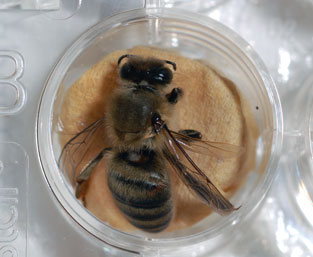
In Vitro Rearing of Honeybee Larvae
Transgenic plants contain a gene or genes that have been artificially inserted, rather than acquired through the plant's natural pollination process. Pesticides are used for control of insects, weeds or fungi on crops. A proposed new ASTM International standard would use honeybee larvae as a surrogate to determine the effect of these items on insect life.
The proposed new standard, WK36581, Practice for In Vitro Rearing of Honeybee Larvae, is being developed by Subcommittee E47.02 on Terrestrial Assessment and Toxicology, part of ASTM International Committee E47 on Biological Effects and Environmental Fate.
Once it has been approved, WK36581 will be used to determine whether transgenic crops or pesticides would harm honeybees or other beneficial insects in nearby areas, according to Michael Patnaude, senior research scientist, Smithers Viscient, and an E47 member.
Primary users of the proposed standard will be industries that need to register pesticides or transgenic crops and regulatory agencies that would use the test data performed under standardized methods to assess potential environmental hazard of these products.
Interested parties are encouraged to join in the standards developing activities of E47.
CONTACT Technical Information: Michael Patnaude, Smithers Viscient • New Bedford, Mass. • Phone: 203-927-4523 | ASTM Staff: Scott Orthey • Phone: 610-832-9730
 SN Home
SN Home Archive
Archive Advertisers
Advertisers Masthead
Masthead RateCard
RateCard Subscribe
Subscribe Email Editor
Email Editor